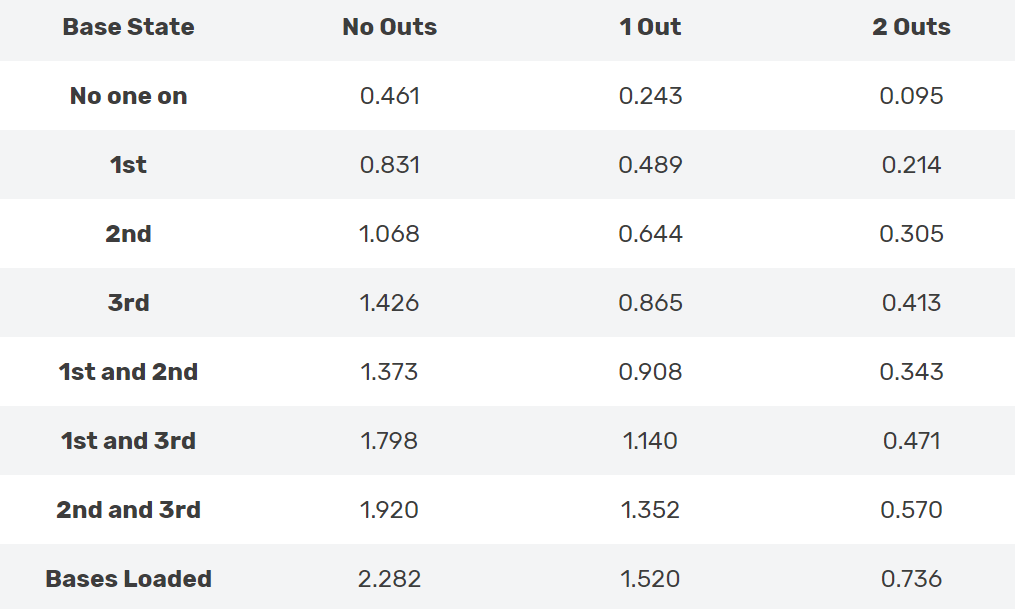I always thought that baseball managers were savants. They knew when it was beneficial to switch pitchers for an advantageous match-up. They navigate the ambiguities of sacrifices with a runner on third. Sometimes they even have to decide to walk in a run rather than let a juggernaut hit.
The sheer amount of experience to manage at the major league level seems dizzying. Or so I thought before I started studying sabermetrics and came across RE24.
In this article I’ll show how a manager can use the run expectancy matrix, which is at the heart of the RE24 calculation, to inform their in-game decision making. We can use this technique to aid decision making in many areas, but today we perform a case study on base-stealing.
The Basis for RE24: The Run Expectancy Matrix
RE24 stands for Run Expectancy based on 24 base/out states. The important thing here is understanding what base/out states are. In each at bat, a player comes to the plate in a certain state. The state refers to runners being on certain bases and how many outs there are. One example: ‘Runners on 1st and 2nd, no outs’ is a state.
An at-bat always transitions you between states. The number of outs can change, the locations of the runners can change, or both, or neither. The important thing is that each state has an average number of runs yet-to-be-scored in the inning. For instance, with a runner on third and 1 out, a team will score on average 0.865 more runs in that inning. The full list of expected runs for the base/out state is listed below.
#sabermetics #sports #decision-making #sports-analytics #baseball #data analytic
